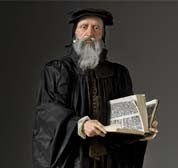Jacob’s Ladder

In Genesis 28 we find God speaking to Jacob in a dream. The Lord tells Jacob that his descendants will multiply, be blessed of God, and will inherit the land upon which he was laying (vrs. 13 and 14). The Lord also promised to be with Jacob wherever he goes and to bring him back to this land (vrs. 15). Prior to the Lord’s address, however, a strange vision was given to Jacob.
He had a dream, and behold, a ladder was set on the earth with its top reaching to heaven; and behold, the angels of God were ascending and descending on it.
Genesis 28:12
No explanation of the vision is provided in the text. So what does it mean?
Ziggurats
During Jacob’s journeys through ancient Mesopotamia, it is certain that he saw many ziggurats. These temple towers, which appear not only in the Middle East but also in Central America, were a place of sacrifice to various gods. The most famous ziggurat being the Tower of Babel described in Genesis 11.
Ziggurats featured a stepped construction comprising a large base that ascended, step-by-step, to a much smaller summit. Upon the summit was the alter. The purpose behind the ziggurats was for men to ascend to heaven.
So What’s Jacob’s Ladder About?
For the interpretation of Jacob’s dream we must turn to the New Testament, to the words of the Savior.
And He said to him, "Truly, truly, I say to you, you will see the heavens opened and the angels of God ascending and descending on the Son of Man."
John 1:51
Christ is the ladder Jacob saw in the vision. Unlike the ziggurats where men are ascending to God, God descended to man in the person of Christ. This is the difference between Christianity and the religions of men: all non-Christian religions are works-based—man trying to ascend to God via his own righteousness. This is like a drowning man trying to climb out of a pool using a ladder of water; it can’t be done. Christianity is completely opposite: man’s works play no part in bringing the sinner to God.
Here’s the gospel in a word: imputation. It’s Christ’s righteousness (His perfect keeping of the Law) being imputed (transferred) to His people, and their sins being imputed to Him (which He bore on the cross). Men can only stand before God when clothed in Christ’s righteousness—and this was accomplished by God descending to man, not man ascending to God.
It may be demaunded, what is that thing in Christ, by and for which, we are justified. I answer, the Obedience of Christ, Rom. 5. 19. And it stands in two things, his Passion in life and death, and his Fulfilling of the law joined therewith. . . . The obedience of his passion stands before God as a satisfaction for the breach of the law. . . . By the second Obedience in fulfilling the lawe, the sonne of God performed for us, all things contained therein, that we might have right to life everlasting, and that according to the tenour of the lawe, Levit. 18.5.
William Perkins (1558-1602)
For further reading: Heidelberg Catechism, questions and answers 12–18.
Merry Christmas!
--The Catechizer
Labels: Exegesis, Soteriology




0 Comments:
Post a Comment
<< Home